May 8. After I posted last night’s entry, another rhino came to the watering hole and, with Nevada’s help, I manages to get some photos of him in the moonlight. Not great, but, hey, it’s something, so don’t complain.
For our last real day of the trip, we met for breakfast at 5:30. Yikes; this is a vacation? We set out into Etosha again and spend four or five hors viewing game. Our prize pot is two white rhinos (the two we saw last night were black rhinos. Again we do not spot lions, leopards or cheetah (nor did we’re elephants today), but other wildlife is prolific, especially around water holes. Around one waterhole, we saw seven different kinds of animals–kudu, springbok, oryx, zebra, ostrich, warthogs and Impala.
After the park, we go back to the lodge, pack quickly and set out driving back to Windhoek, stopping for lunch at a restaurant en route. We arrive back at Galton House, our home for the third time, at about 6 PM. We met for drinks at seven and I read the extension part of my fake blog for the trip, which people seemed to enjoy. Very good and relaxed dinner, saw a terrific slide show that Bob Newman did on his Myanmar trip with Nevada and then said fond farewells to those who we might not see, given our different travel times and itineraries tomorrow.
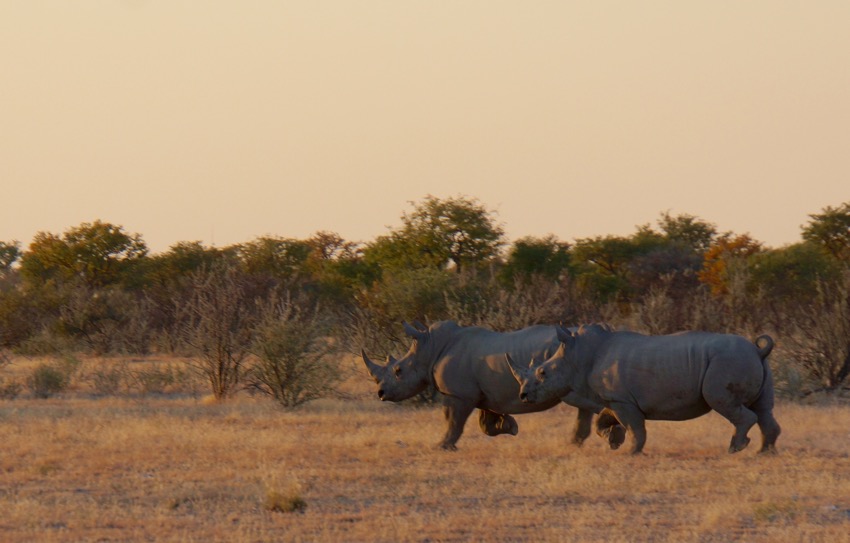
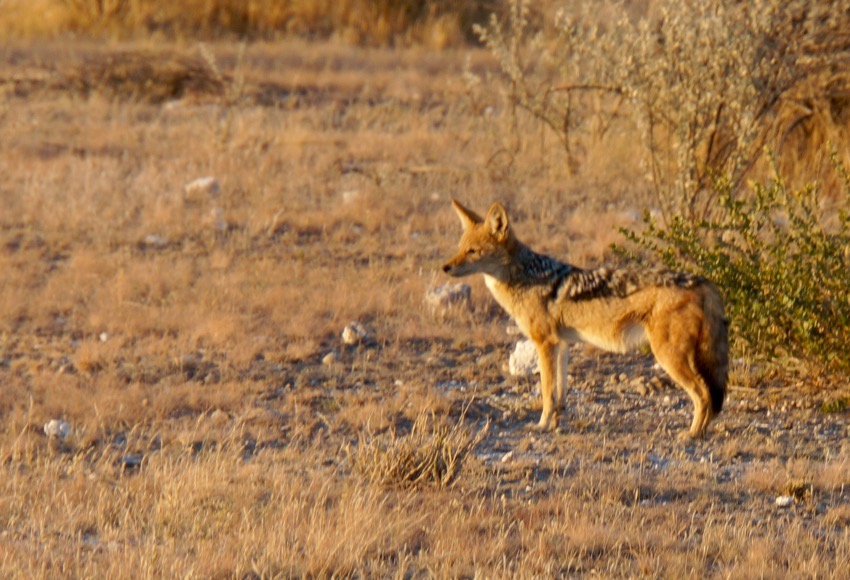 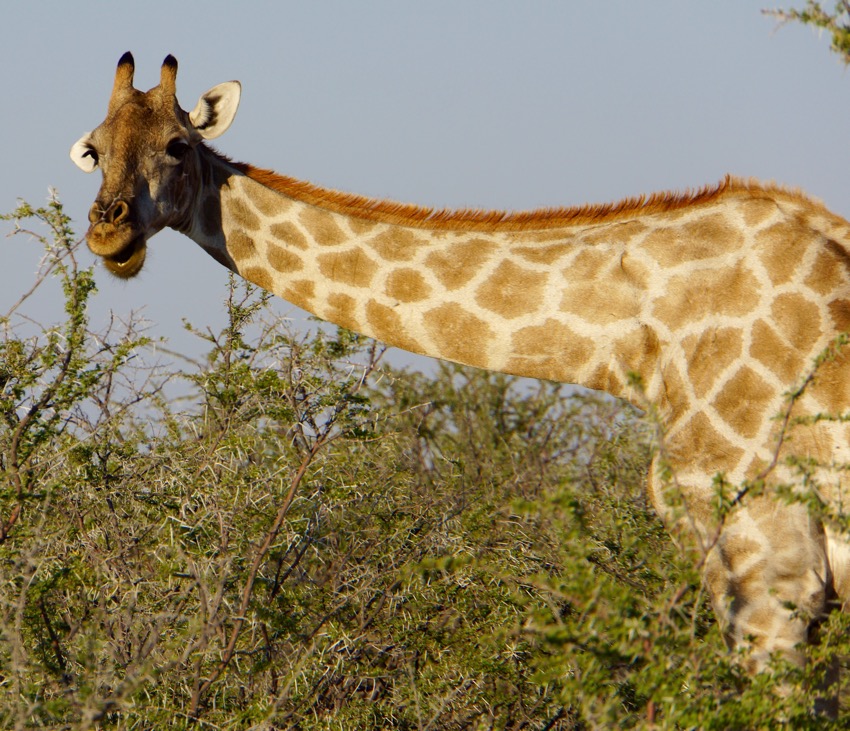 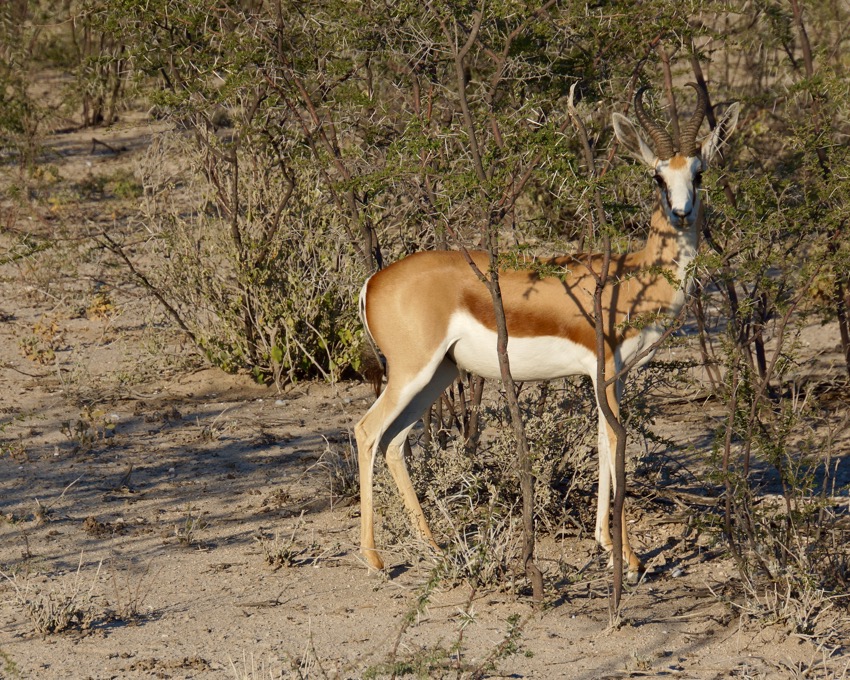 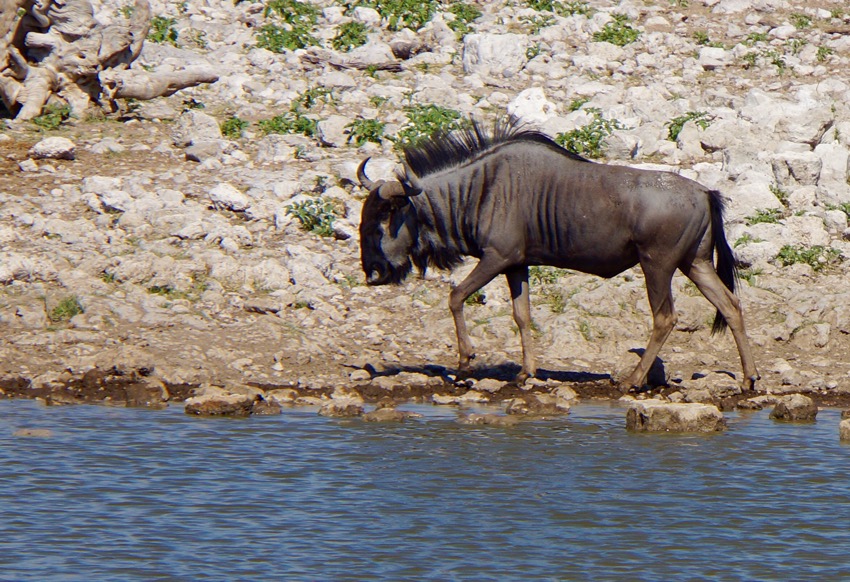 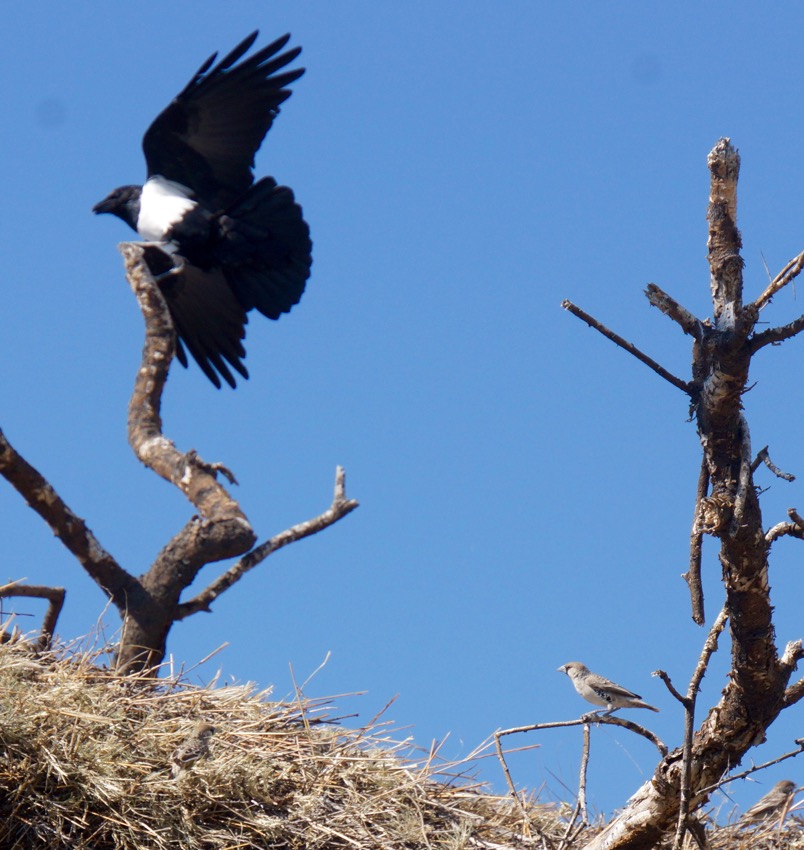
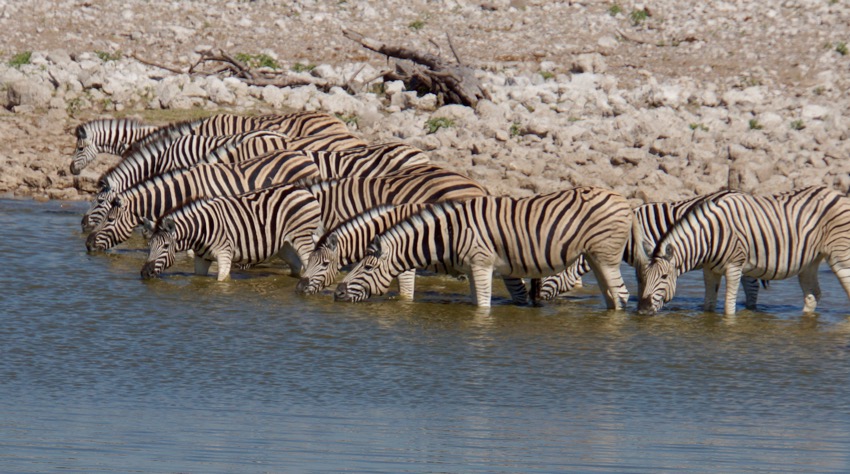 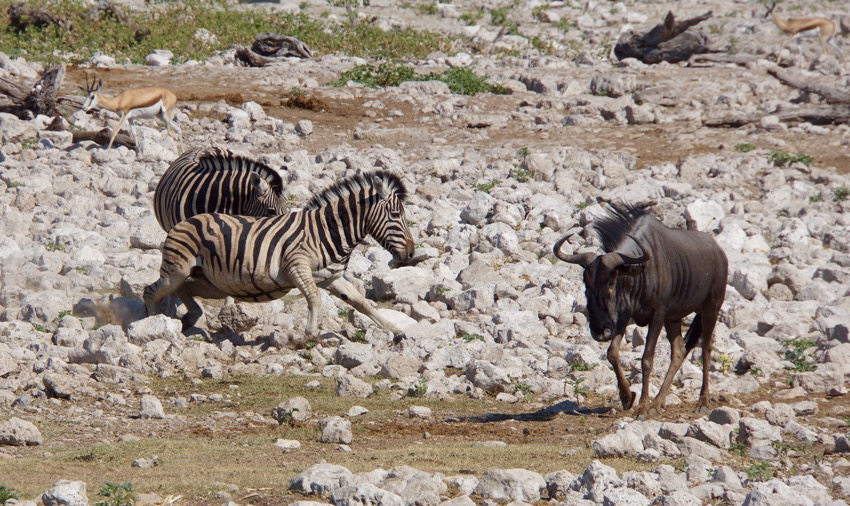  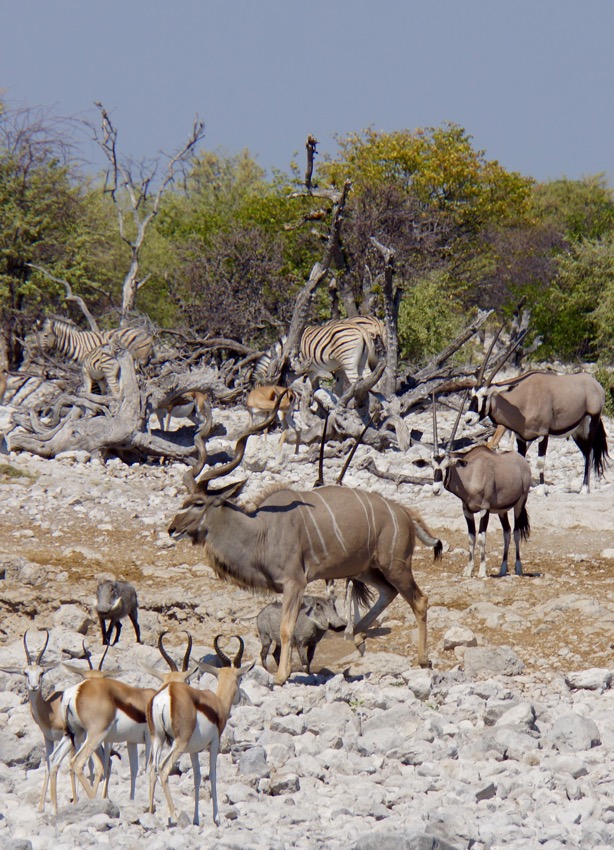
May 7. Another long 10-hour driving day, but this one is different, because most of it is an extended game drive through Etosha National Park, the second most popular tourist destination in Namibia, after the dunes.
We leave at 7, after an early breakfast, passing again through the incredible melting pot town of Opuwo. Spend a little time finding air for a low tire, the drive a couple hours to Etosha. There is considerable game along the road, and this feels much more like the safaris Carol and I have been on in other trips. The best game viewing, though, is at water holes, where often diverse groups of animals congregate to drink and bathe, we probably stop at 7 or 8, squeezing a quick toasted cheese and tomato lunch in between. There are signs in a number of places indicating that facilities and roads have been constructed with funds from Millenium Challenge Grants from the U.S. It’s nice to see that we’re doing some good for Namibia, and that it is being recognized.
Etosha National Park, translated as the ‘Place of Mirages’, Land of Dry Water’ or the ‘Great White Place’, covers 22 270 km², of which over 5,000 km² is made up of saline depressions or ‘pans’. The largest of these pans, the Etosha Pan, can be classified as a saline desert in its own right. The Etosha Pan lies in the Owambo Basin, on the northwestern edge of the Namibian Kalahari Desert. Until three million years ago it formed part of a huge, shallow lake that was reduced to a complex of saltpans when the major river that fed it, the Kunene, changed course and began to flow to the Atlantic instead. If the lake existed today, it would be the third largest in the world. Etosha Pan is the largest of the pans at 4 760 km². It is nowadays filled with water only when sufficient rain falls to the north in Angola, inducing floods to flow southward along the Cuvelai drainage system. The Park consists of grassland, woodland and savannah. Game viewing centers around the numerous springs and waterholes where several different species can often be seen at one time. The Park boasts some 114 mammal and over 340 bird species. Wildlife we saw included elephant, giraffe, blue wildebeest, eland, gemsbok (oryx), zebra, rhino, hyena, and warthog, as well as the endemic black-faced impala.
Andersson’s Camp is located just 4.5 km from Etosha National Park’s Andersson Gate, Andersson’s Camp takes its name from Charles Andersson, the Swedish explorer who first ‘discovered’ the Etosha Pan with Sir Francis Galton in 1851. Set against a backdrop of the low Ondundozonanandana Mountains, Andersson’s Camp is located within the private Ongava Game Reserve that borders onto Etosha National Park. The Ongava Game Reserve is typified by white calcrete soils, rocky outcrops and scrub-covered plains that support a rich variety of game such as giraffe, lion, rhino and various antelope species. The Camp overlooks a waterhole where guests can enjoy the interaction of wildlife coming and going throughout the day and night.
This former farmstead has been tastefully rebuilt to modern-day standards. The design and construction of Andersson’s Camp was guided primarily by the principles of environmental sustainability – reduce, reuse, recycle. The old farmhouse now forms the main dining, bar and swimming pool area of Andersson’s Camp, with guest tents radiating outwards into the secluded Mopane woodlands typical of the region. Tents are constructed using a clever mix of calcrete stone cladding, canvas and wood, with double-door entrances and a small verandah that is an extension of the elevated wooden decks on which the tents are raised. The open-air en-suite bathrooms continue the unique design. Andersson’s Camp’s close proximity to Etosha National Park is ideal for game drive excursions into Etosha to take in the array of game found there.
Andersson Camp is comfortable, quaint and authentic. At dinner we can look at the camp’s waterhole from the deck. After dinner we go to an underground hide, no more than ten meters from the waterhole, where we can observe and photograph wildlife. We see a rhinoceros, but I do not have the right equipment to be able to photograph it at night. Which is okay. Just means I saw it, but you don’t. Seems fair; after all, I paid for the damn trip.
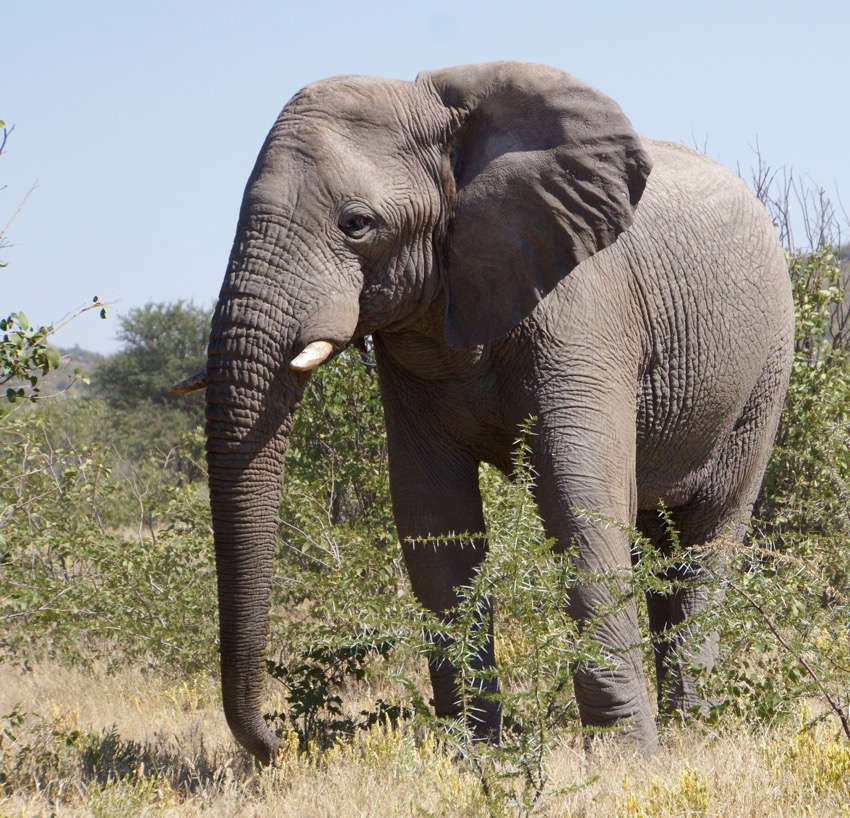 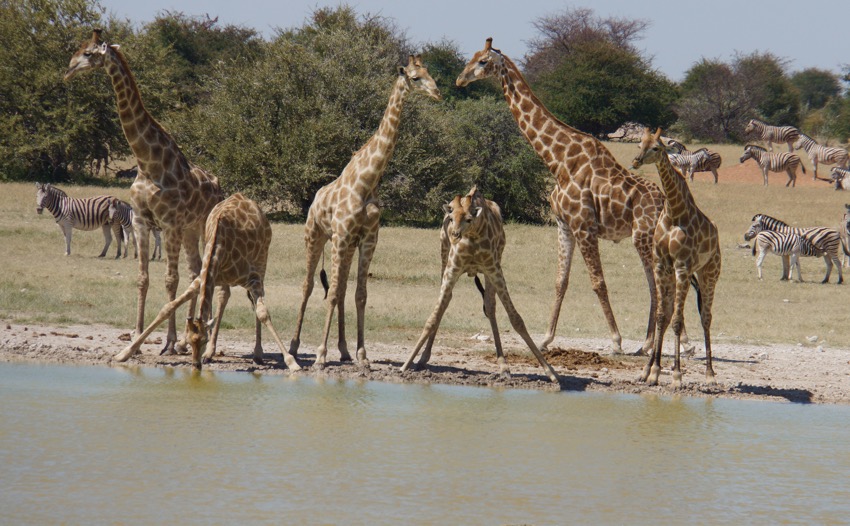 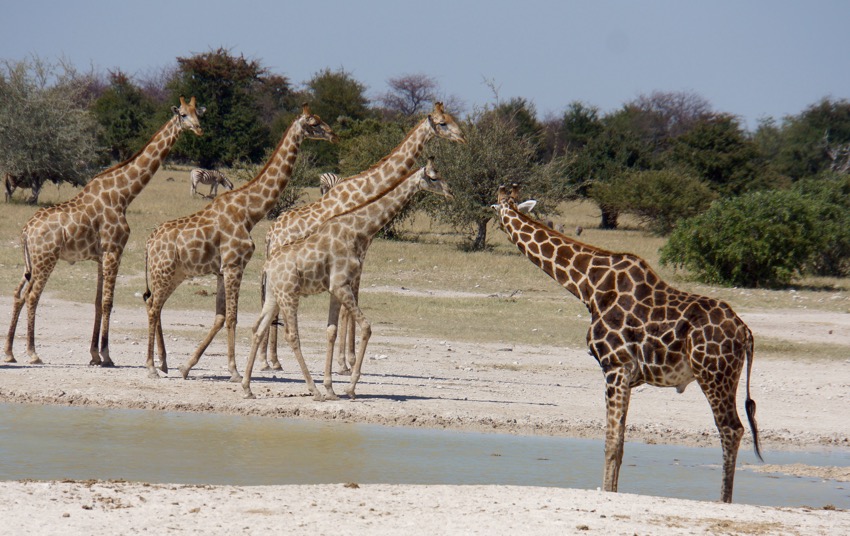  
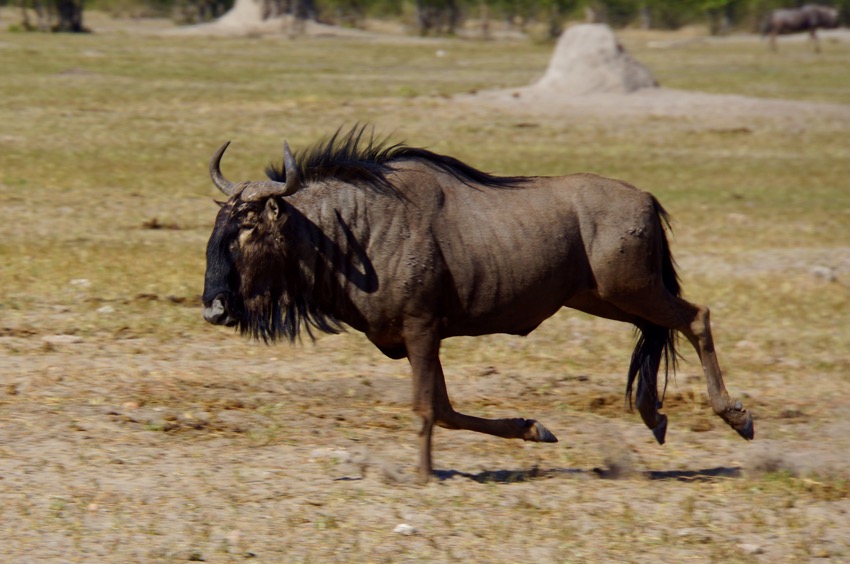
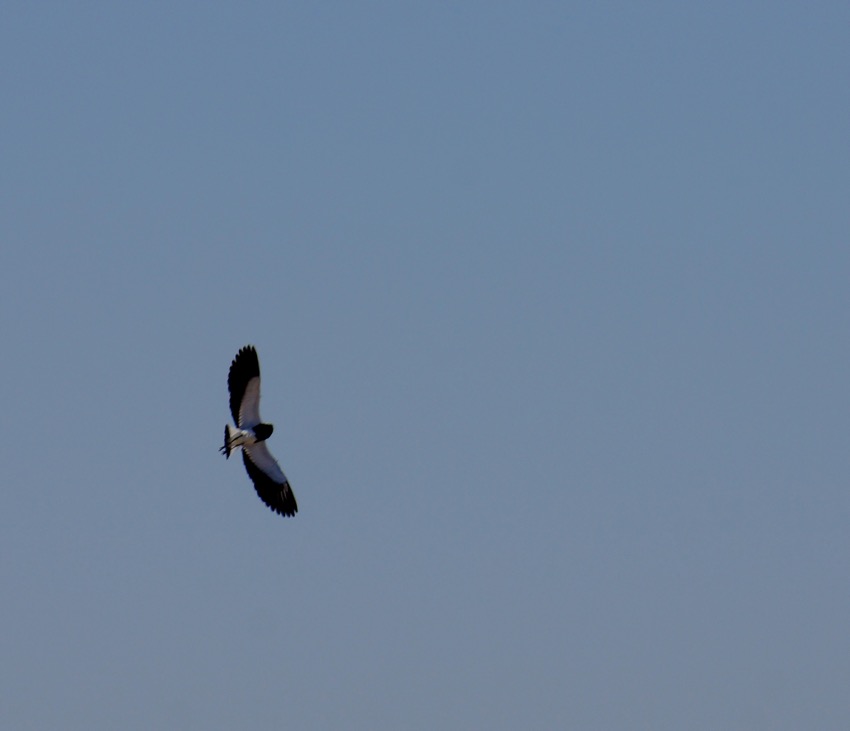 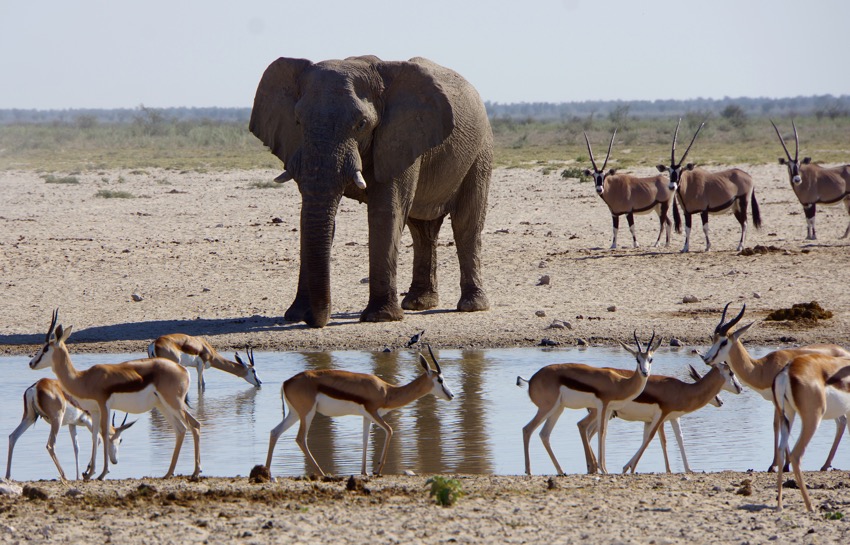  
May 6. After breakfast, we set out to visit a Zemba village. The Zembas are closely related to the Himba and Herero people we have seen, but their dress and hair styles differ somewhat, and the women do not use ochre on their ski, and retire rather early..
As the bus pulls up, Tarry and our local guide, Festus, are clearly having a serious discussion with the chief. Part of the deal is that our guides bring materials and food stuffs to the village in turn for their cooperation. While we brought maize, tea and a few other things, apparently we failed to bring the snuff that the chief had requested. The matter is resolved when Tarry promises to get the snuff to the chief later. At this point, we are free to get off the bus and photograph, which we do for a couple hours.
While each village and the people we see are different, there is getting to be a certain repetitive aspect to it, and I’m not as gung-ho about photographing as I was in the earlier villages. Fortunately, the timing is good, since we will visit only one more village, before going to Etosha National Park tomorrow to view game.
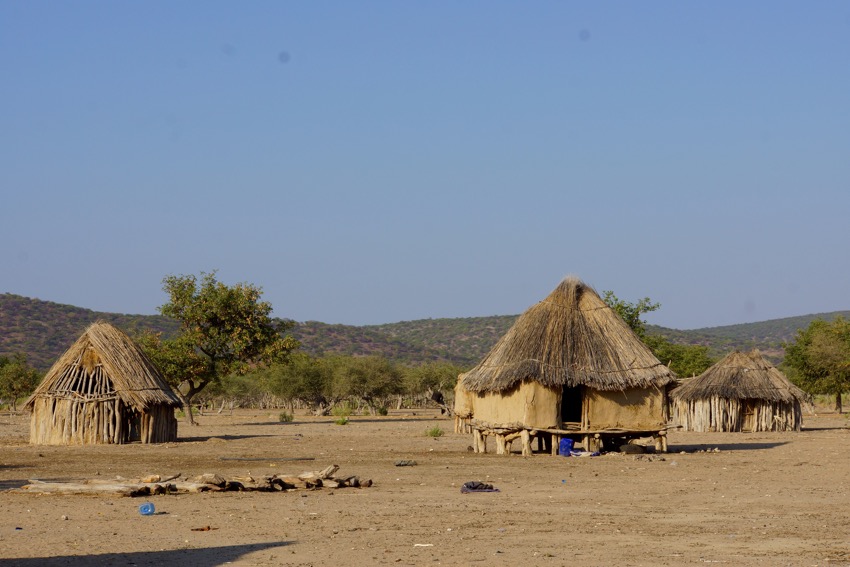
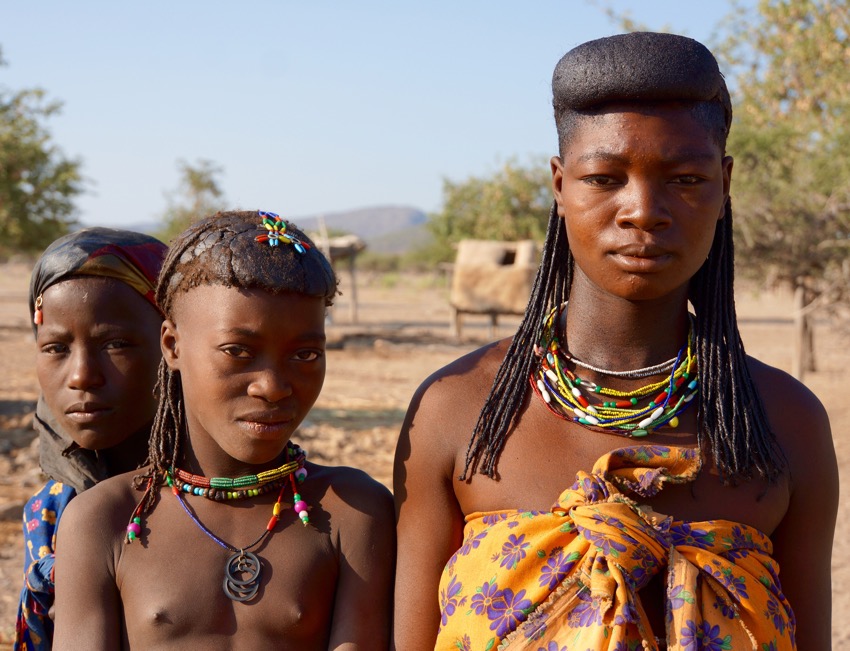 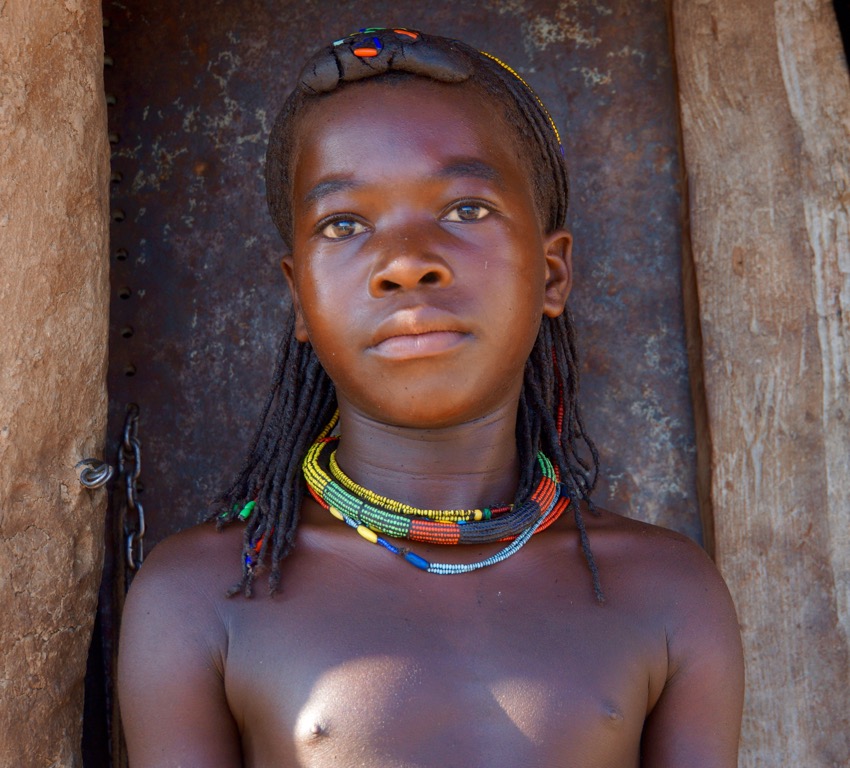 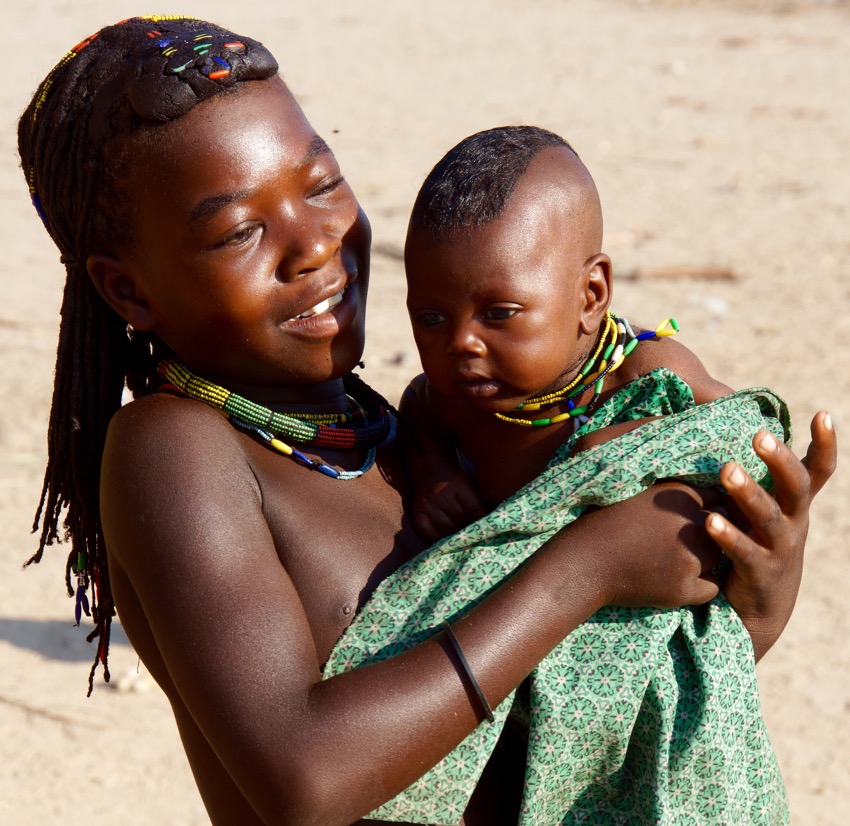 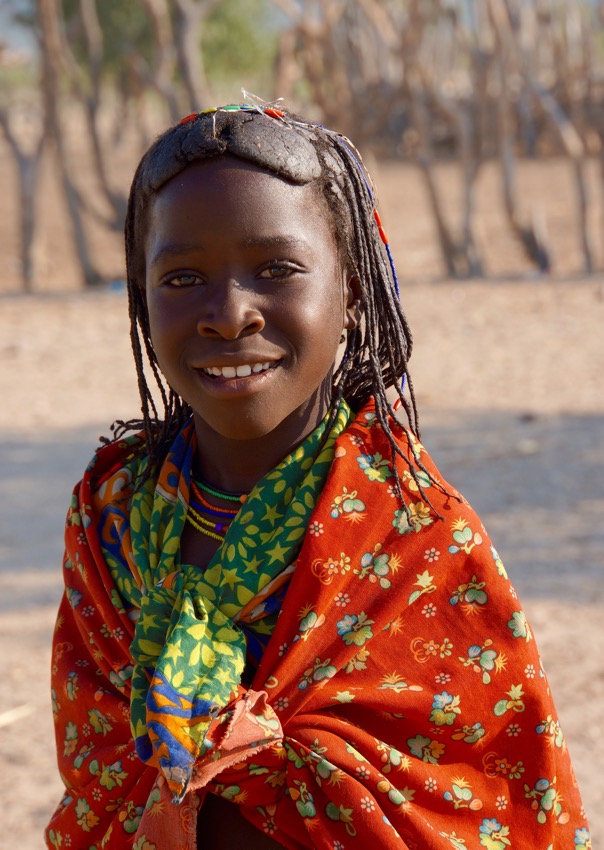
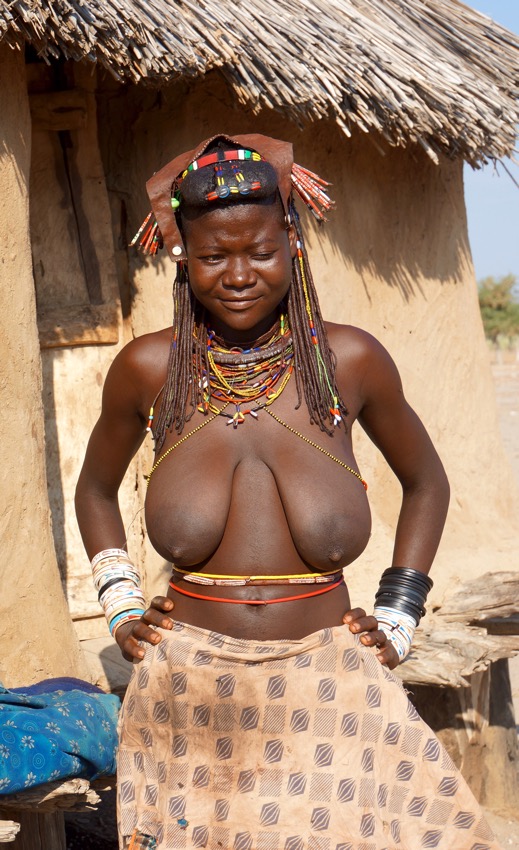
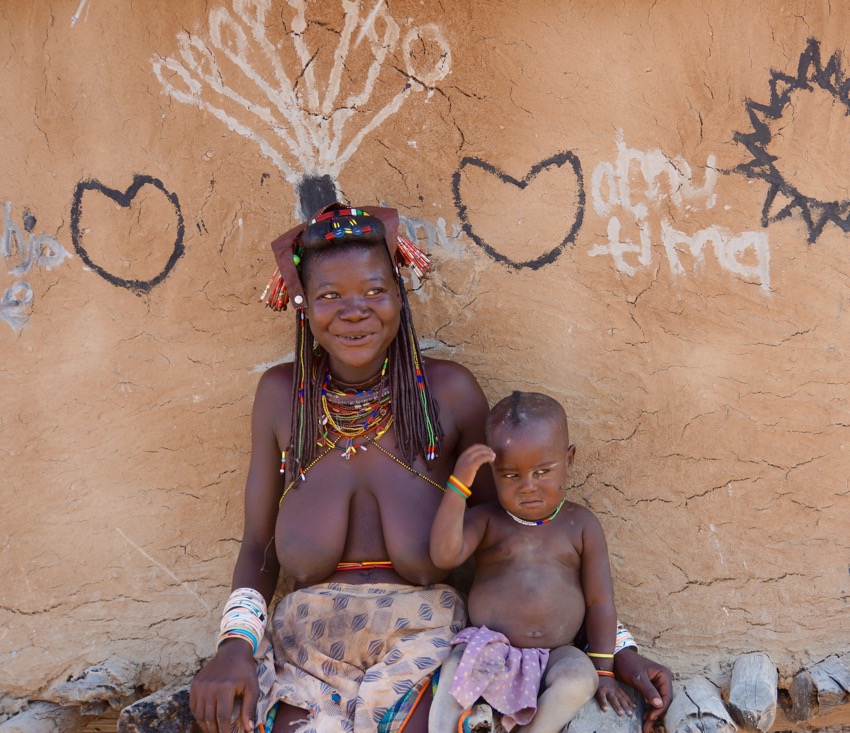
En route back to our lodge, we visit a place called Scents of Namibia. While its a relatively small place, here the oils used for Namibian soap, perfume and lotions are processed from resins brought from the Northwest part of Namibia. The processed oils are then transported to Windhoek, where they are made ready for shipment, both within Namibia and internationally, where they are utilized by many well-known perfume and lotion makers. A plaque acknowledges that the plant was constructed with funds provided through Millenium Grants by the U.S. We watch an interesting 6-minute video, get a tour of the plant and some members of the group make purchases.
We stop at an ATM and grocery store on the way back to the lodge, then talk for a long time, as it takes inordinately long to get our lunch. We have an hour and a half to rest before setting out at 3:30 for another Zemba village. This one is more remote and covers a larger area. We have some difficulty finding it, but when we do, we have another interesting experience photographing in the village.

  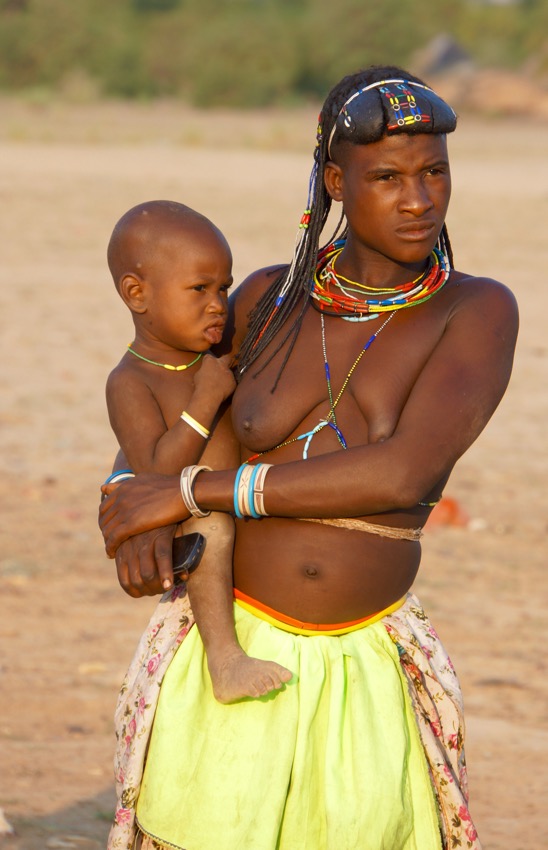 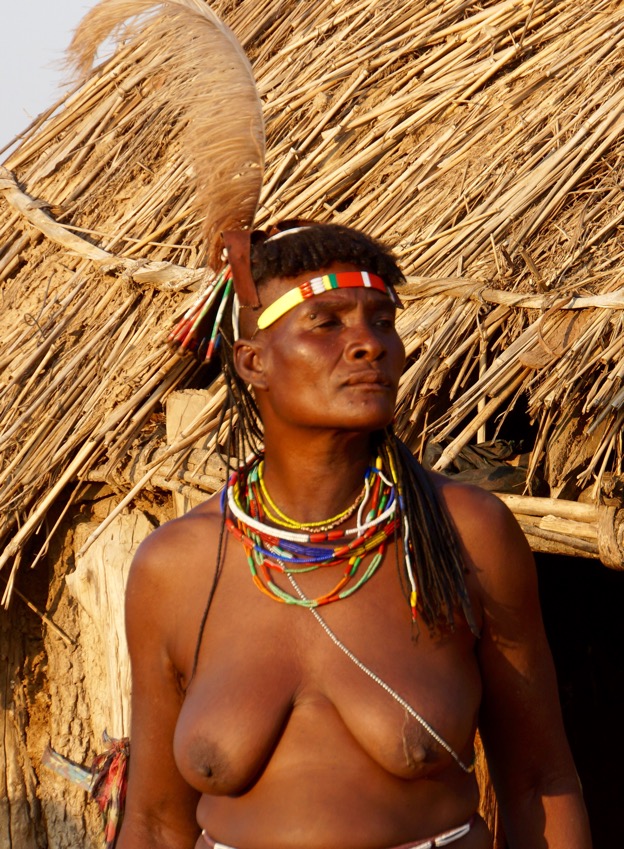
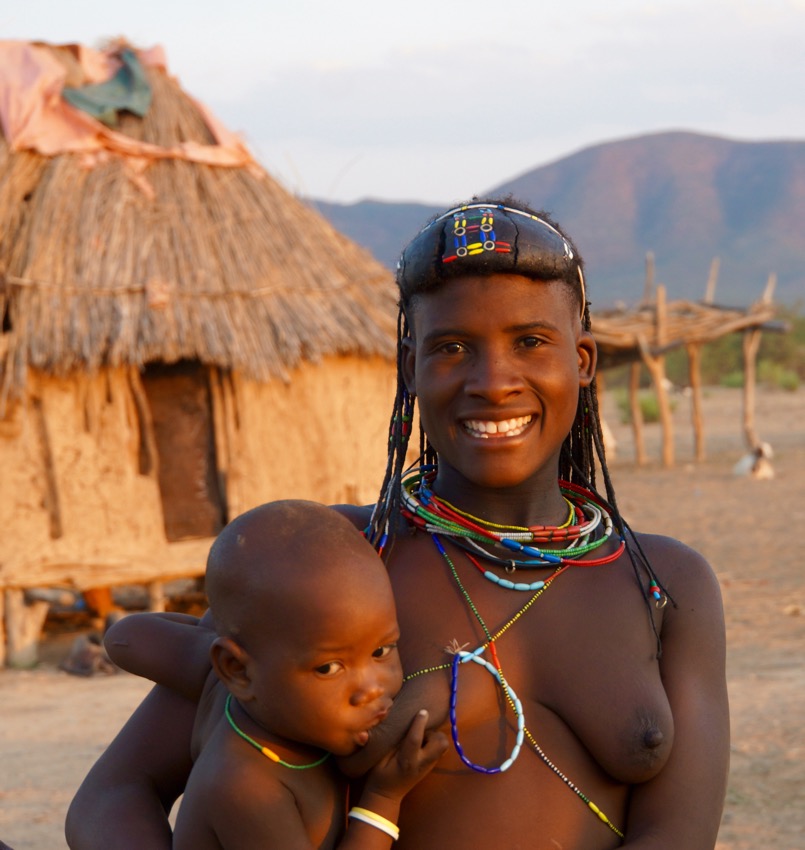
  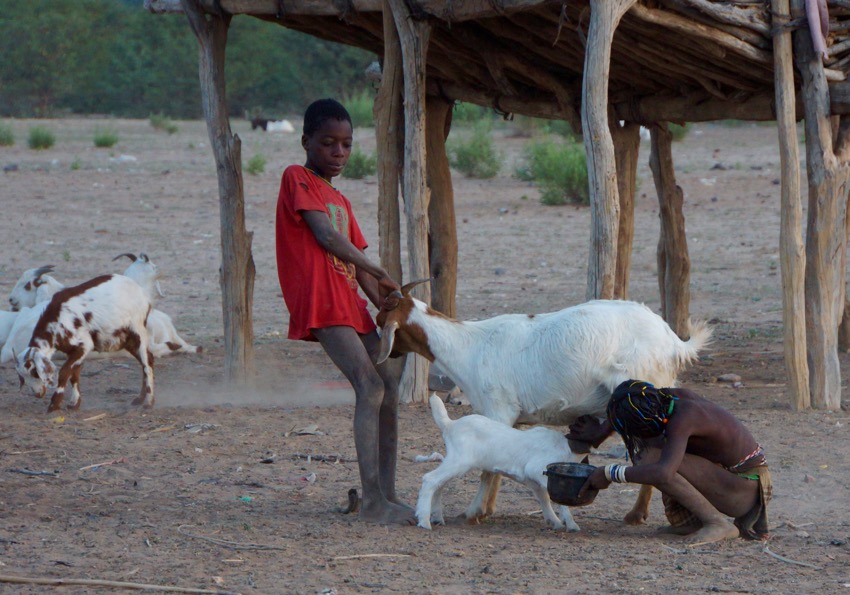 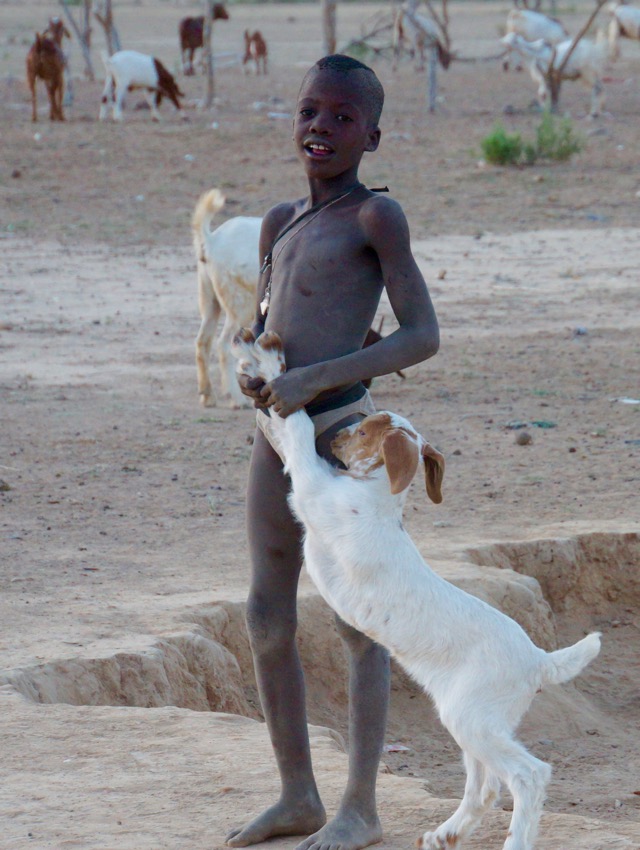
We return to the lodge, clean up a bit and then have dinner together.l
May 5. Breakfast at the lodge and a 7 o’clock departure for another Himba village. This one is larger than the others we visited, and hairstyle and jewelry differ somewhat. Our local guide, Festus, explains Himba customs and answers questions. Again we are free to wander around the village to photograph and are invited in to see a Himba woman apply ochre and perfume.
After we’ve walked around for quite some time, a large circle is formed with Himba women and children seated with jewelry, carvings and other crafts in front of them. We all walk around and wind up buying some things. The sales effort is more aggressive than what we’ve encountered elsewhere, but not offensive. And buying a few things seems a fair trade off for the access we’ve been granted.
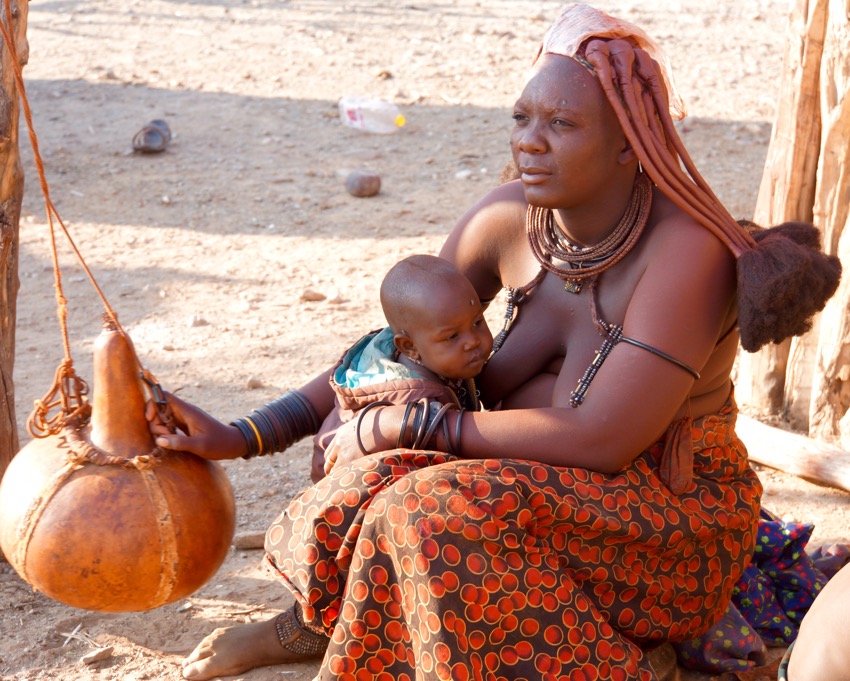
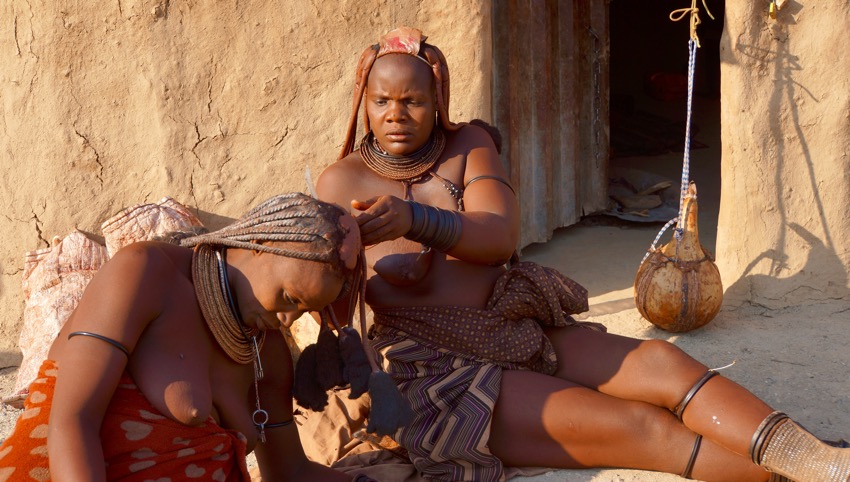 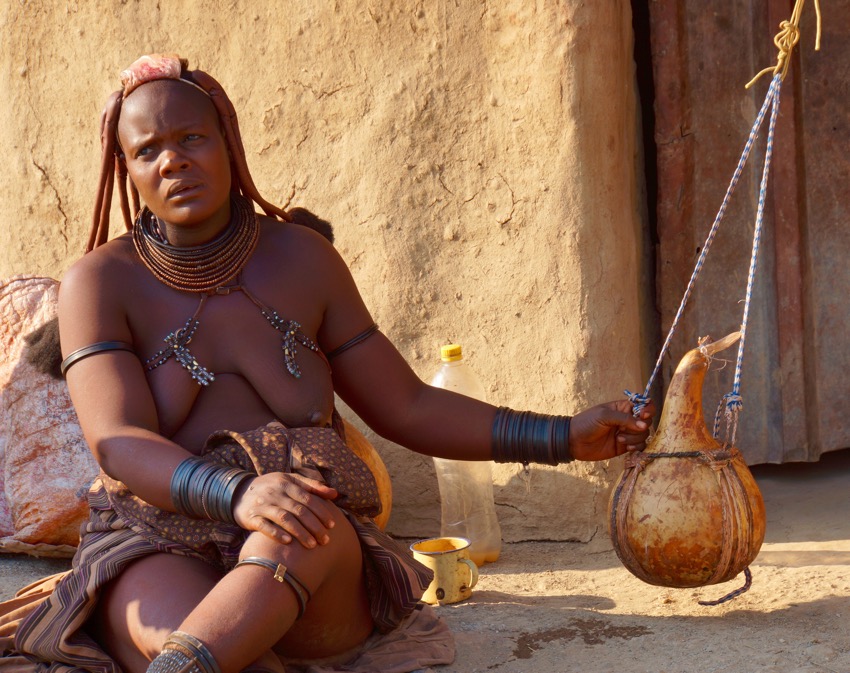 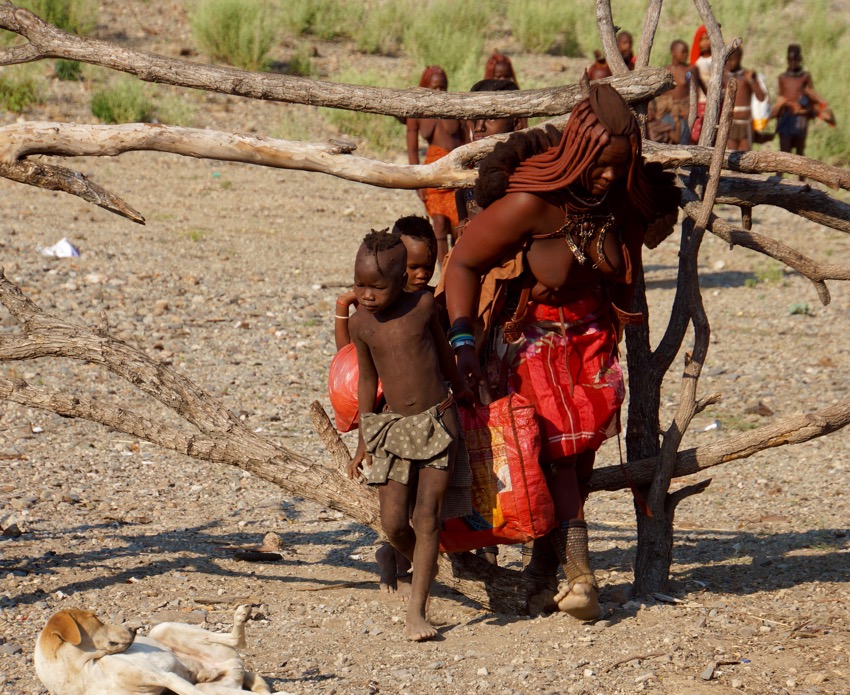 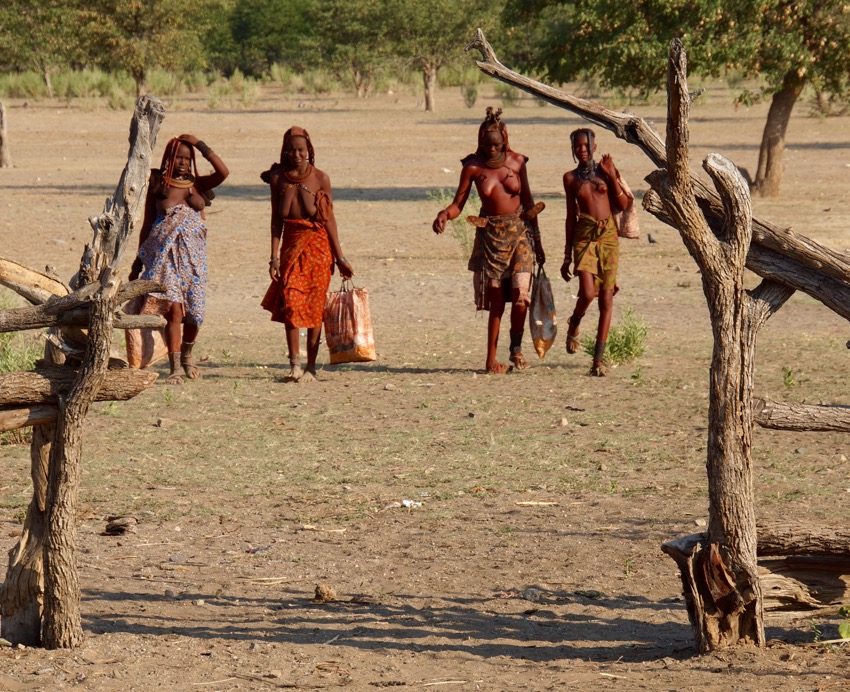 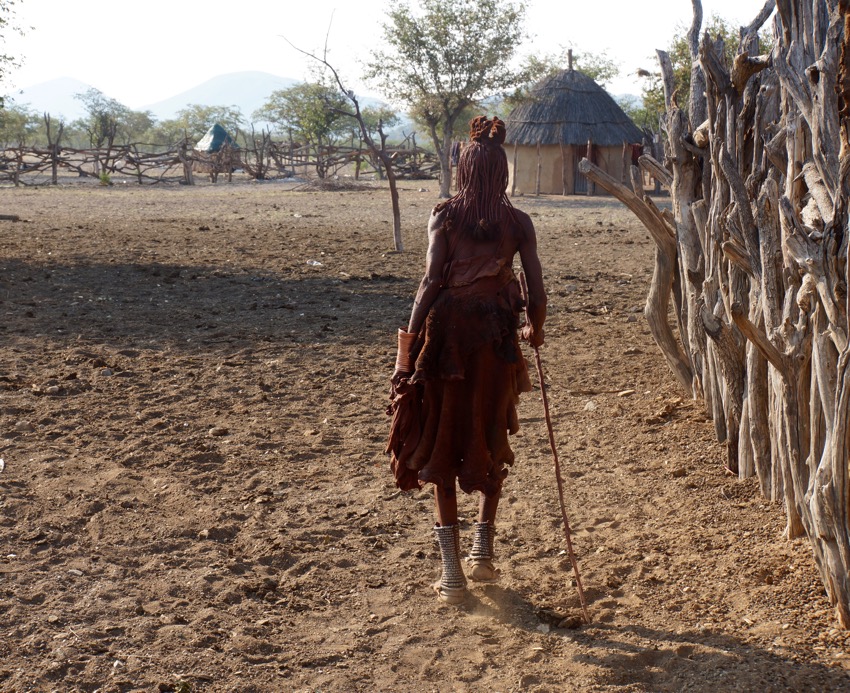
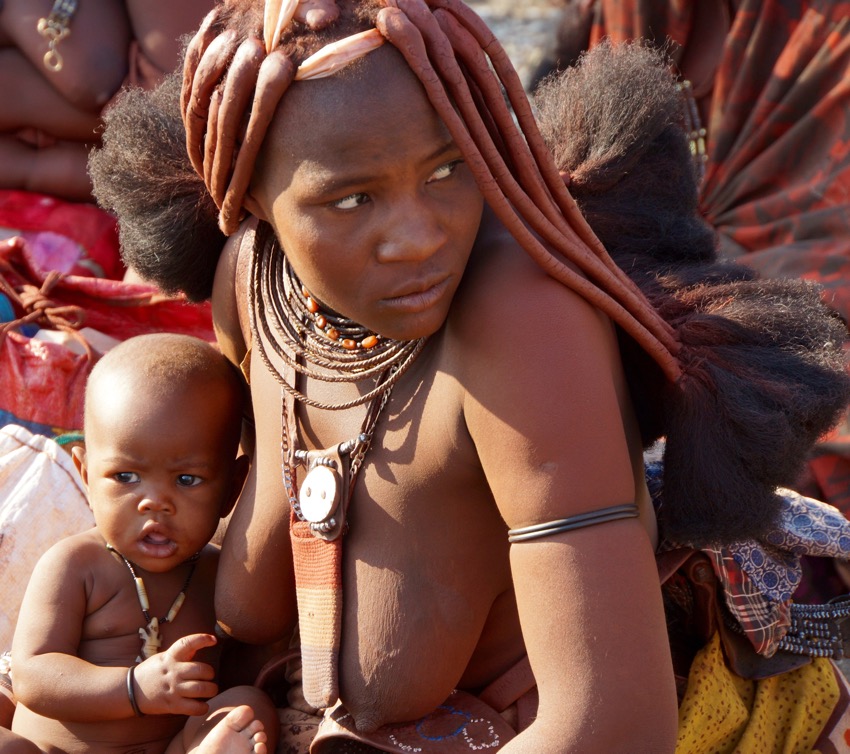
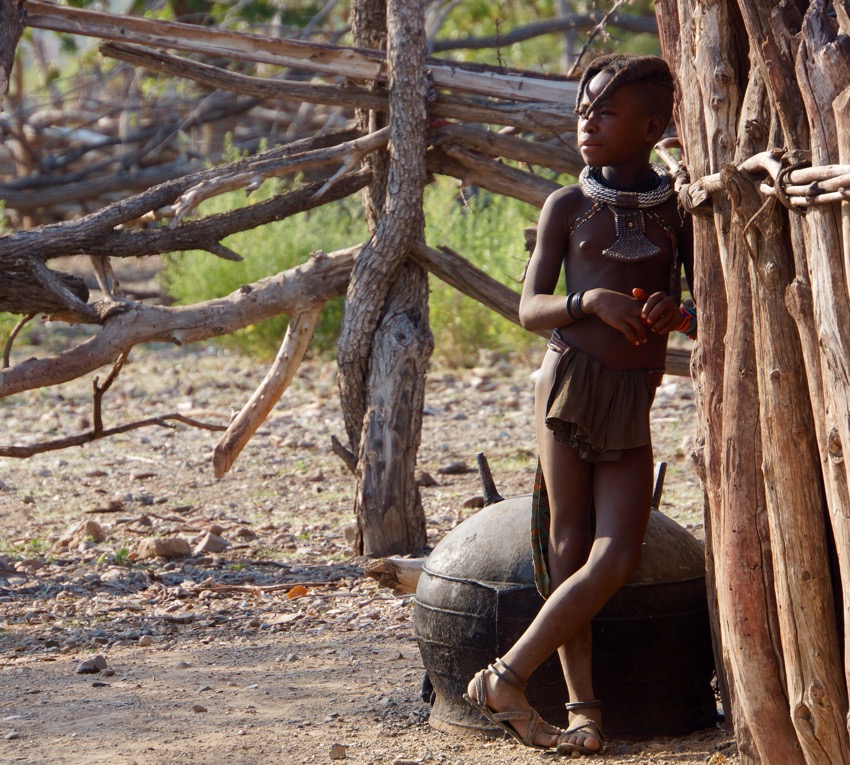  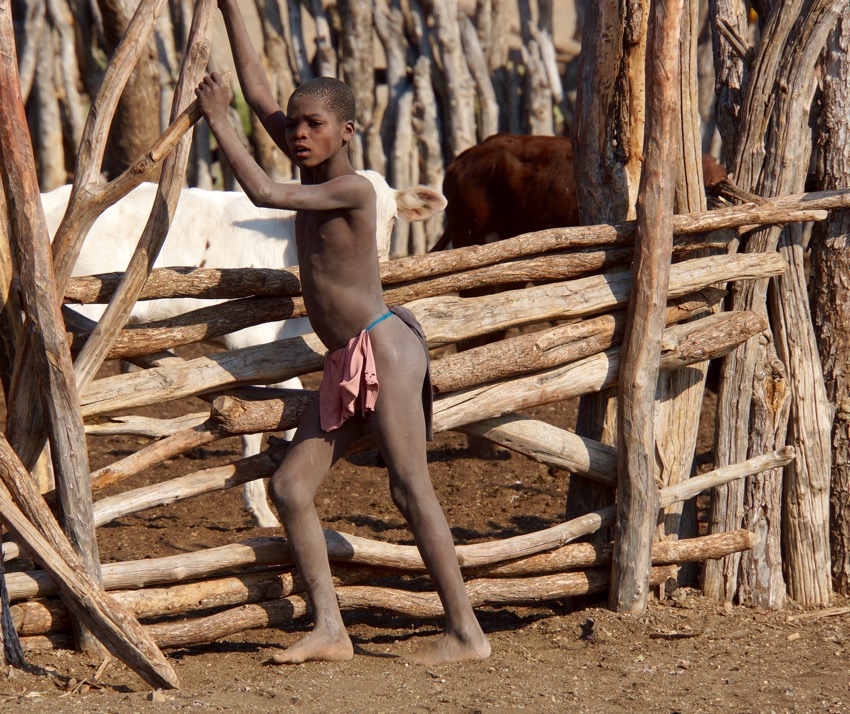
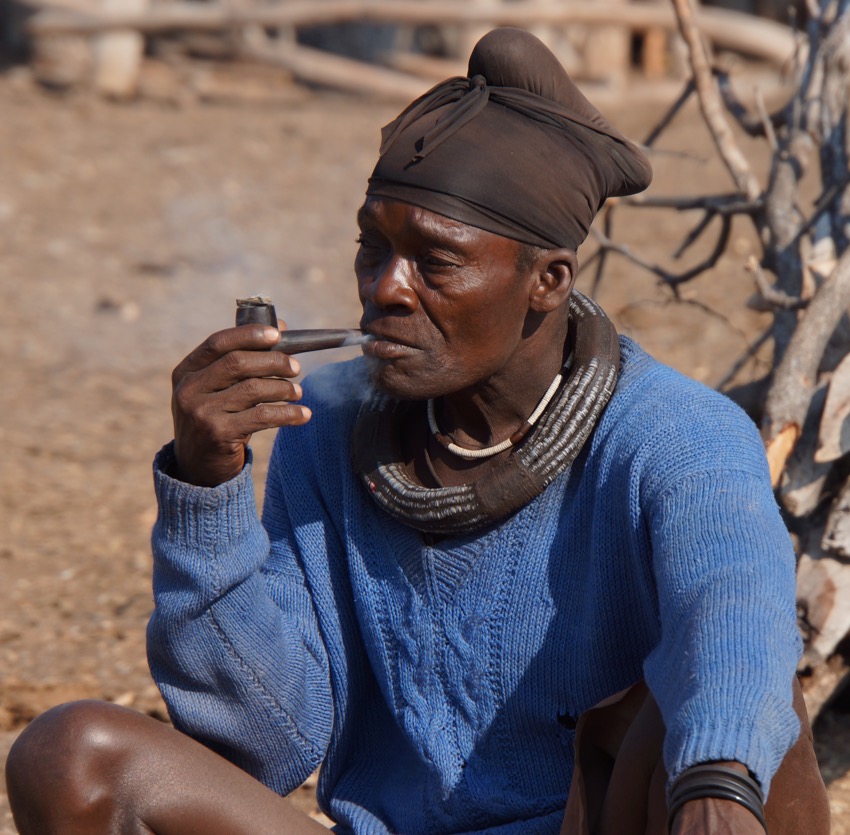 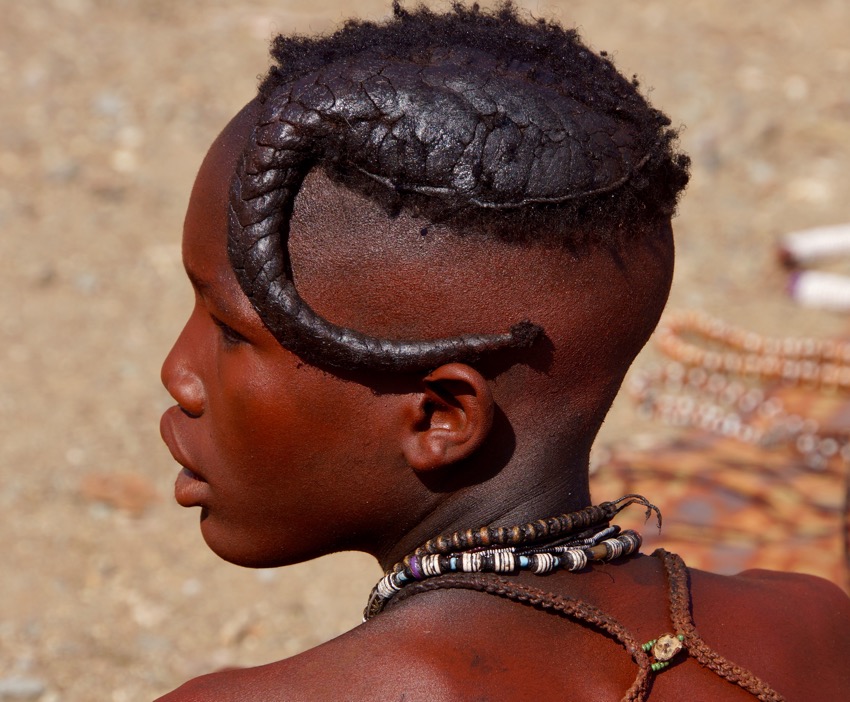 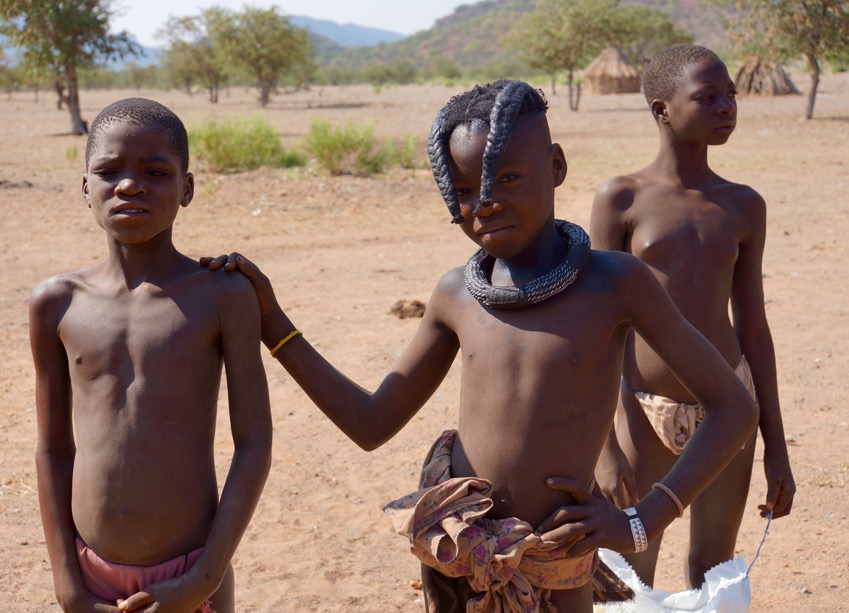 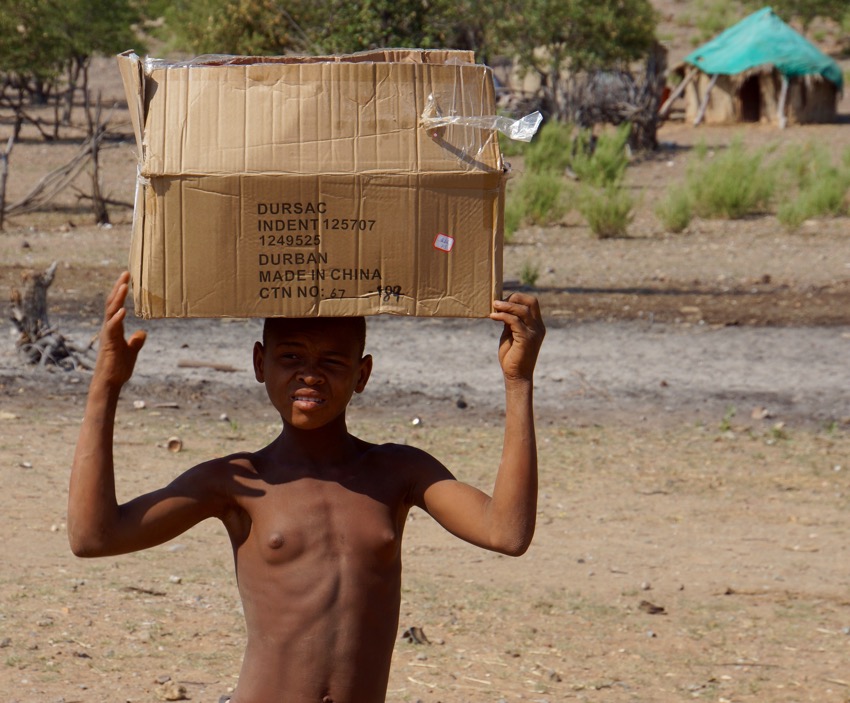 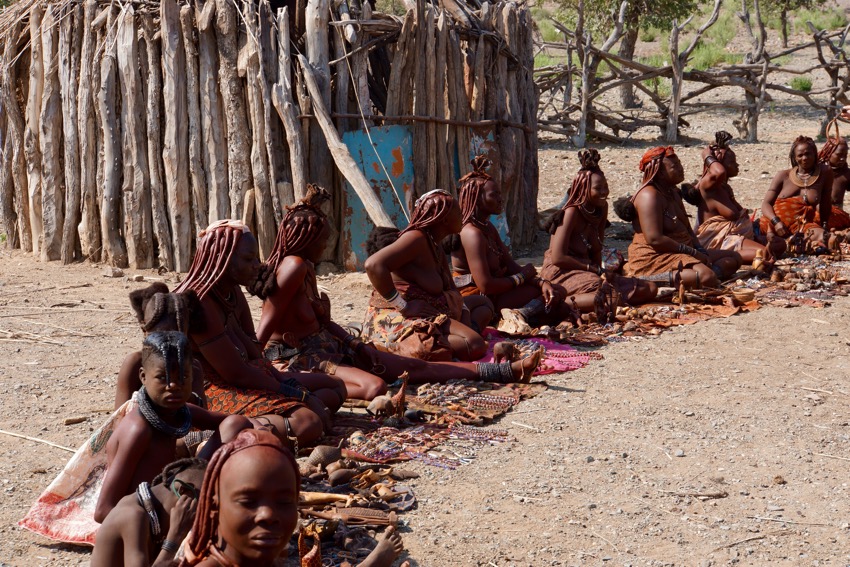 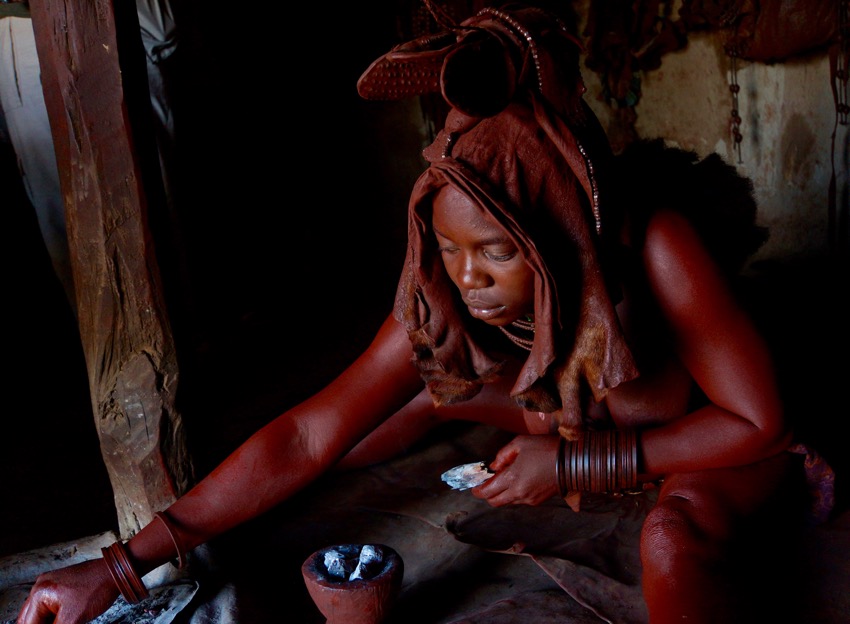
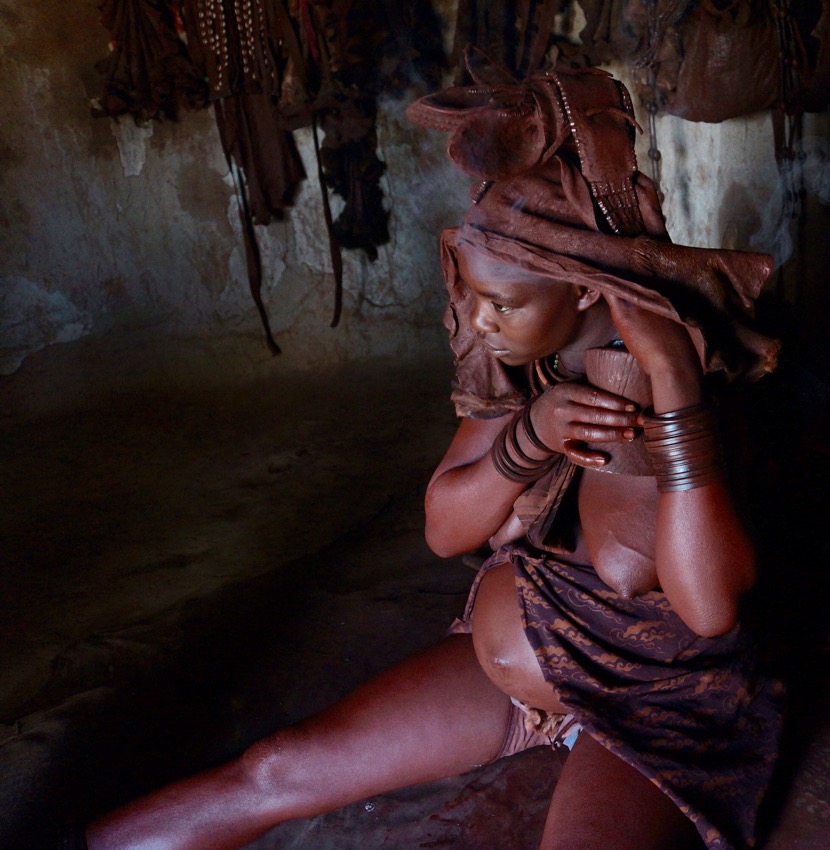 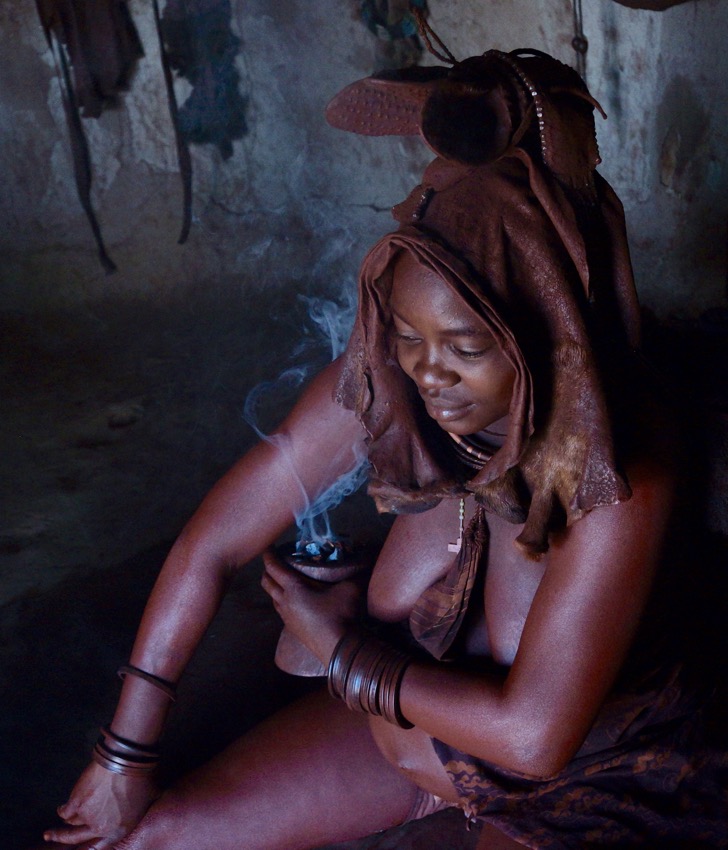 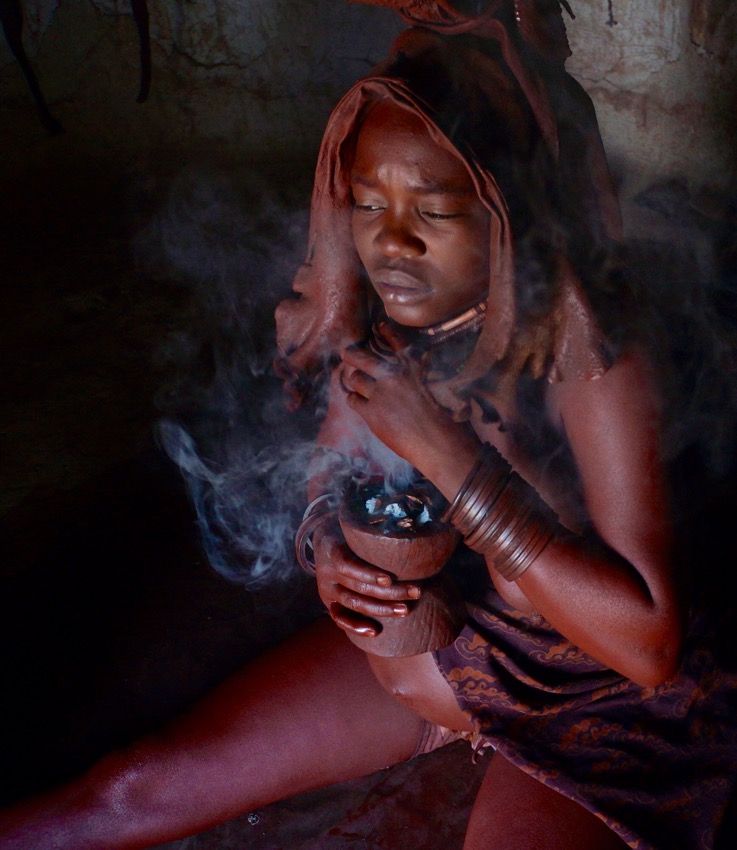 We drive into town and wander around the stores and a nearby market with stalls. There is an amazing array of different people and grabs (and lack thereof), and wandering into a grocery store, a barber shop and a pool hall is quite an experience. By late morning, it is very hot and dusty, so we return to the hotel for a bit of relaxation and for lunch. We drive into town and wander around the stores and a nearby market with stalls. There is an amazing array of different people and grabs (and lack thereof), and wandering into a grocery store, a barber shop and a pool hall is quite an experience. By late morning, it is very hot and dusty, so we return to the hotel for a bit of relaxation and for lunch.
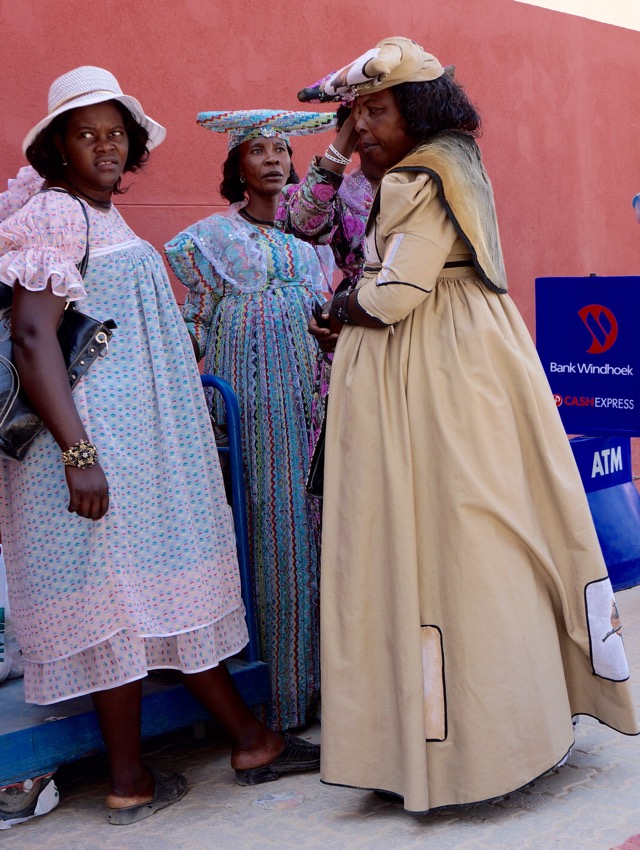
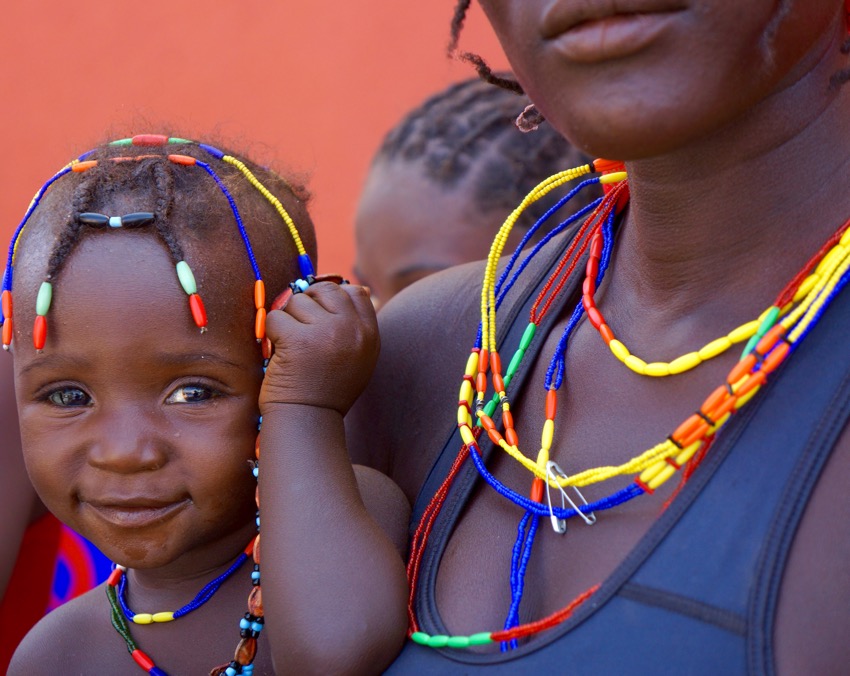
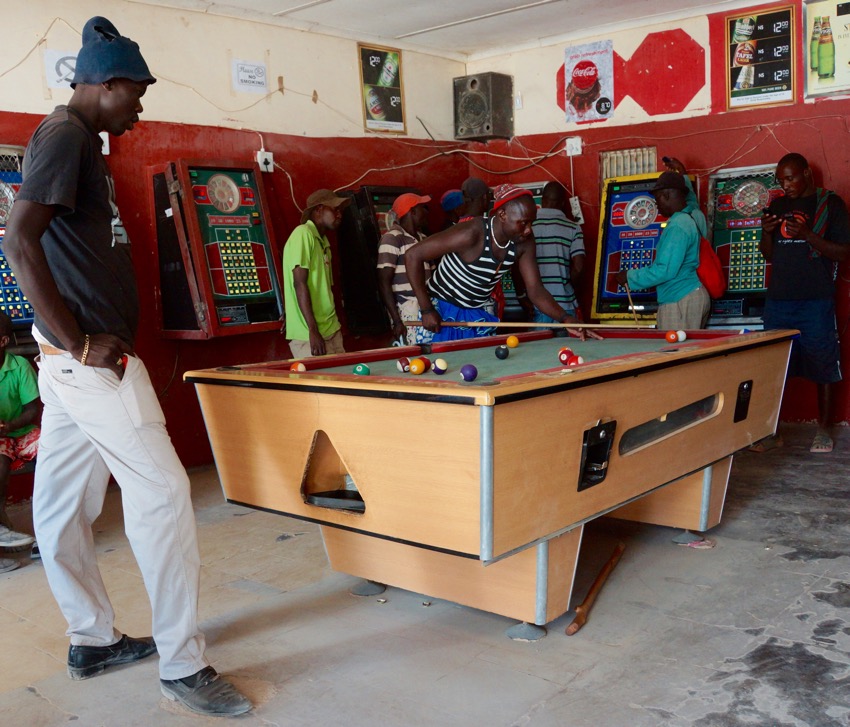 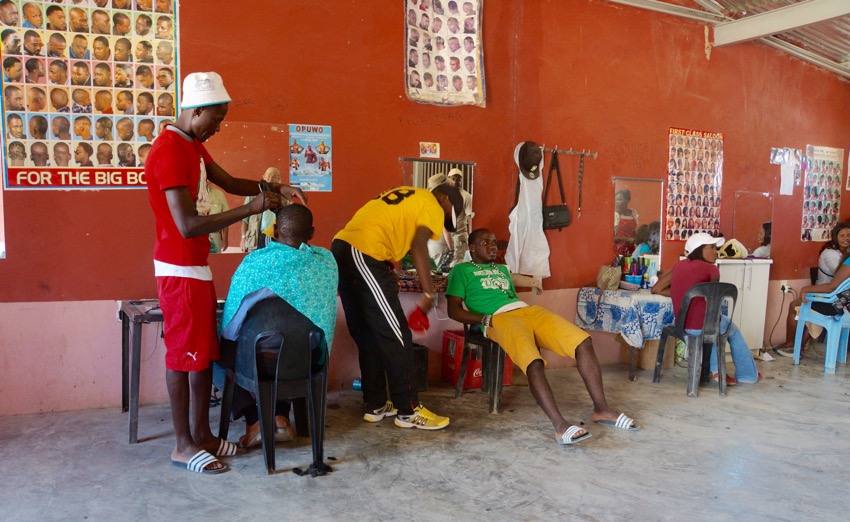 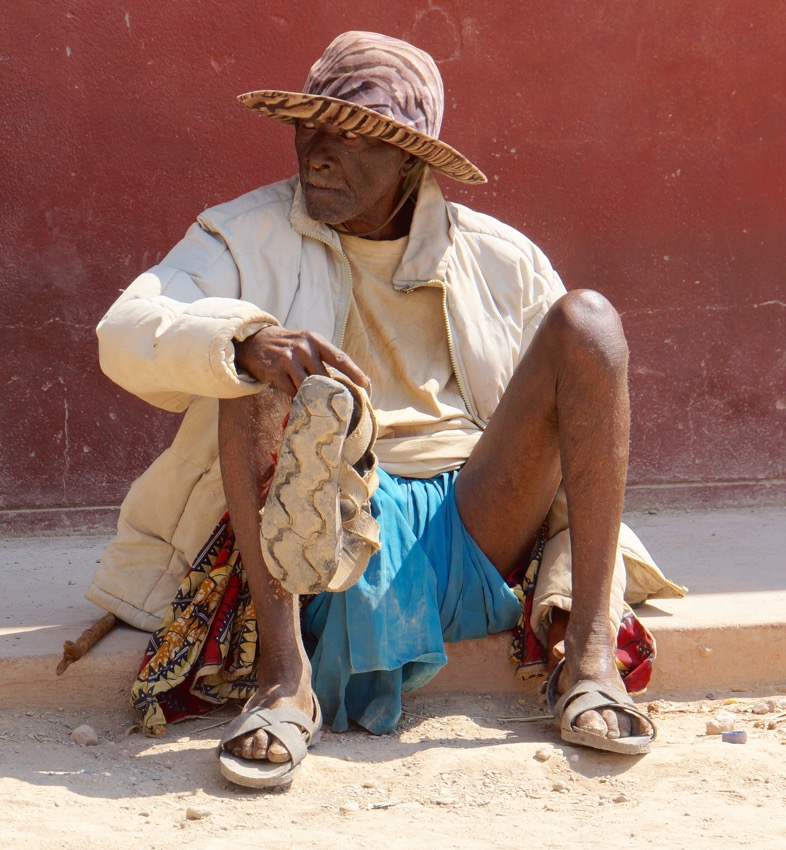 At 3:30, the rest of the group is visiting another Himba village, but I feel Himbaed out at this point and so have elected to stay back, relax and have a terrific and relaxed hot stone massage. A good decision, I think. At 3:30, the rest of the group is visiting another Himba village, but I feel Himbaed out at this point and so have elected to stay back, relax and have a terrific and relaxed hot stone massage. A good decision, I think.
Reconnect with the group for drinks and dinner.
May 4. Breakfast at the hotel and say goodbye to Carol and Jeff. Rest of us take off in our two vans for very long drive north. At least we’re on a good, paved road.
This seems like a good time to comment on our three guides–Tarry, Stuart and Usko. In short, they rank a sold A. Tarry is an amazingly mature 27-year old, who,is extremely knowledgable about everything and relates well to the guests. Stuart is jovial and fun-loving, with a deep, resonant voice that even I can hear. In his thirties, he’s experienced as a guide, but has been with Ultimate Safaris a relatively short period of time. Usko is also experienced as a guide, but is making his first trip with Ultimate Safaris, as something of a trainee, though you would never call him a trainee, because he is a full participant as a guide and as knowledgable as Tarry and Stuart. He is more reserved, but is a real sweetheart, who everyone likes. The three are hard working, fully focused on the group and work well as a team. I would not hesitate to recommend any of them as a guide. We’re very lucky to have them, and they’ve enhanced our trip greatly.
We set off from Windhoek and head back up to the northwest into the heart of Kaokoland to reach Opuwo Country Lodge in Opuwo, the regional center of Kaokoland. The road today takes through the towns of Okahandja, Otjiwarongo and Kamanjab to arrive around 4:15 PM, after a 9-hour drive, at Opuwo and Opuwo Country lodge. We will be based here for the next three days, going out from here to explore the area and interact with the locals.
As we approach the Opuwo area, we observe dirt and litter along the roadside, the first time we’ve seen this in Namibia. The area has something of the feel of a Ghanaian town, though with fewer shops lining the road. On the way through Opuwo to our hotel we have the opportunity to observe the fascinating mixture of Himba, Herero, and Oshivambo cultures that exist side by side in this small town that has something of the feel of a ‘frontier’ settlement. We see bare breasted, barefoot, Himba walking along side Hereros dressed in their colorful costumes and people in Western garb. This promises to be quite a different experience than what we’ve had.
The hotel is situated on a hilltop to the North West of Opuwo overlooking the valleys and mountains with magnificent sunsets and 360 views, an ideal base from which to explore the culture and tradition rich lifestyle of the Ovahimba. Rooms are comfortable, and air conditioned! We have a couple hours to rest and relax before meeting for dinner.
Meet up at the lodge for drinks and another very good dinner.
|
|





























































